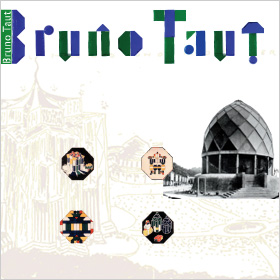| exhibition@work of art@scene of gallery@event |
| In Germany, the architect Bruno Taut (1880 - 1938), is well known for his housing settlements in Berlin (1924 - 31) among which the Siedlung Schillerpark (1925 - 30), gBritzh (1925 - 30), Carl Legien (1928 - 30) together with the garden city Falkenberg (1913-16) had been recently proposed to be nominated as sites of UNESCO World Heritage. Taut is also famous as a utopian during the time of the First World War and in the early Weimar Republic. The most outstanding work is the visionary series of 30 pictures with inscriptions called the gAlpine Architectureh (1918 / 1919) whose originals have been recently restored. In Japan, Taut is known for his strong appreciation of the Imperial Katsura Villa as an gArchitectural Wonder of the Worldh, to which Taut dedicated a series of 26 sketches with texts (Katsura Album, 1934); including his ink paintings (shikishi) and his designs of daily objects (kogeihin). In Germany and Japan, he is also known as an architect of colour, of which much has been restored during the last 10 years, and as a writer of many books on architecture, countless essays and letters. The exhibition joins the various works under Tautfs philosophy of a proper human environment comprising institutions of at least three essential functions: - the house for personal every dayfs life including the garden - cultural institutions for social life including education and amusement Those two are a matter of course but Taut insists on the third one. - a building free from any purpose, social as well as religious, as a pure work of art including painting and sculpture, existing solely for the spiritual life of experiencing art. All three functions should have their specific shaping. They are related but clearly separated from each other. Housing should be simple without decoration, social institutions should have some form of dignity such as symmetry. But art relates human being to the cosmos, as well by form (crystal or star shape), by coluor (sunlight), and material (glass and crystal). The relation of Nature and Art, of given and of man-made environment is the unbroken thread throughout Tautfs works. (M. Speidel) |
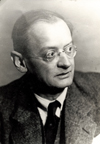 Bruno Taut, portrait, c.1925 Bruno Taut, portrait, c.1925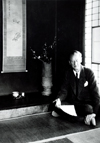 Bruno Taut at SenshinTei
Bruno Taut at SenshinTei |
 Candle Stand, 1936 |
 Hand Mirror with Stand, 1936-37 |
 eLife style itself offers the utmost simple form. Nature is form.f - from the gKatsura Albumh, 1934 |
 Design for Portable Cocktail Bar, 1934 |
 Fuji - Tenno, 1933 |
 Residential Block, Berlin-Weissensee. Trierer Strasse, 1925-26 |
 Row Houses gAm Falkenbergh, Berlin-Grunau, Gartenstadt Strasse |
 gGlass Househ, photo of the Dome from inside, 1914 |
 Alpine Architecture Plate 10, gFirm in Ice and Snowh, 1918 |
 Alpine Architecture Plate 28, gStar Systemh, 1919 |
 Alpine Architecture Plate 7, gCrystal Valleyh, 1919 |
 Alpine Architecture Plate 6, gValley of Flower Crownh, 1919 |
 Alpine Architecture Plate 26, gThe Cathedral Starh, 1918 |
 Forest at Chorin, c.1903 |
2F >> 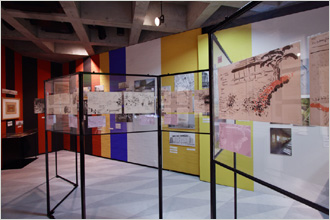 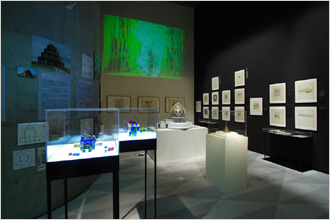 |
|
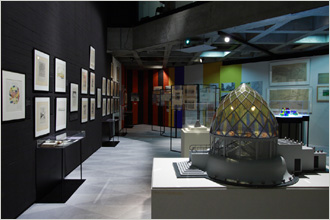 |
3F >>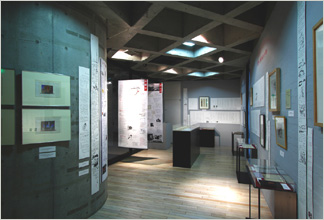 |
4F >> 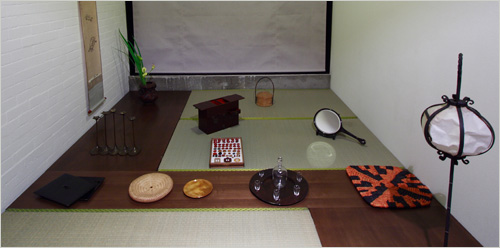 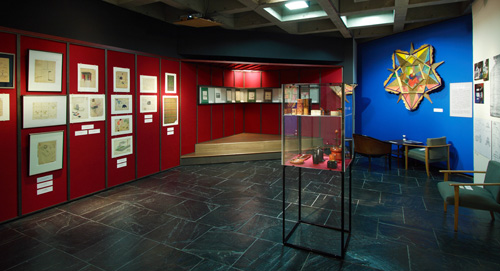 |
|
|
Related event 1 Saturday, 3rd Feb. 17:00- BRUNO TAUT EXHIBITION OPENINT COMMEMORATION TALK Presenters: Manfred Speidel (professor at RWTH Aachen), Tokugen Mihara (industrial artist), Arata Isozaki (architect) Manfred Speidel Born in 1938, Stuttgart. Graduated University of Stuttgart, department of Architecture in 1965. A leading authority on researches of Bruno Taut. Served as the scientific coordinator for the preservation of worldfs art nouveau architecture for the UNESCO Project during 1987 - 1992. Tokugen Mihara Born in 1911. In 1930, participated in the industrial design activity which Fusaichiro Inoue started in Takasaki. Acted as co-producer and cooperator while Taut stayed in Takasaki and taught industrial design production. Tautfs sole protege in Japan. Arata Isozaki Born in 1931. Graduated from Tokyo University, D. Arch in 1961. Established Arata Isozaki & Associates in 1963. Main works consist of gOita Prefectural Libraryh, gModern Museum, Gunmah, gMuseum of Contemporary Art (MOCA), Los Angelesh, gNagi Museum of Contemporary Arth, among many others. Admission fee: 2000 yen (reservation necessary. WATARI-UM support and general members are invited.) OPENING LECTURE Sunday, 4th Feb. 16:00 - 19:00 Manfred Speidel (professor at RWTH Aachen) Part 1: From gAlpine Architectureh to gKatsura Villah gAlpine Architectureh, pure art that crystallized the mountains. The contrasting gKatsura Villah, which talked of simple lifestyle and garden space. What is the world view that lie common to both sides? Part 2: Oriental ism in Bruno Tautfs architecture and industrial art Tautfs architectural works have been told through expressionism or modernism. But common to all their background is the view towards the Orient as their origin of design. Admission fee: 2,000 yen (reservation necessary. WATARI-UM support members 1,000yen, general members 1,600yen.) Related event 2 Lecture series: Dreams of Taut Architecture Total six lectures 19:00 - 21:00 Friday, 2nd March Lecturer: Kengo Kuma (architect) Born in 1954. Main works consist of gKiro-san Observatoryh, gAndo Hiroshige Museumh, among many others. Next to the guest house gWater / Glassh (1995) which he calculated to stand on the cliff on the sea cost of Atami, is the Hyuga Villa that Bruno Taut designed. Approaching the sea from Hyuga Villa gThe view from above and below the Hyuga Villa has been erased. It was the same with the project called gWater / Glasshcc The only exception is the view from Hyuga Villa; it could be seen when standing from its gardencc Sympathy, or an homage.h (excerpt from gAnti-Objecth Kengo Kuma) The lecture will cover Taut and Kumafs history related to Taut. Friday, 9th March Lecturer: Arata Isozaki (architect) Born in 1931. Graduated from Tokyo University, D. Arch in 1961. Established Arata Isozaki & Associates in 1963. Main works consist of gOita Prefectural Libraryh, gModern Museum, Gunmah, gMuseum of Contemporary Art (MOCA), Los Angelesh, gNagi Museum of Contemporary Arth, among many others. Taut in Turkey The lecture will talk of Tautfs dedication to Ataturk, plan for the Mausoleum, and of his own death. Friday, 16th March Lecturer: Shoichi Inoue (professor at International Research Center for Japanese Studies) Born in 1955, Kyoto. Graduated from Kyoto University, Master in Architecture in 1980. Specializes in architecture history, theory of design. Author of gHouryu-ji he no Seishinshih, gTsukurareta Katsura Rikyu Shinwah, hAi no Kukanh, etc. Colors and twills of Katsura Villa Many architects have talked about the Katsura Villa, therefore much have been about the architecture or the garden. This lecture focuses on what architects would not direct their eyes to; the history of Kyoto, the culture of the court nobles and the city people, and the eroticism that lies within. Friday, 23th March Born in 1944. Held positions of president of Tokyo University of Agriculture, chairman of Japanese Institute of Landscape Architecture, chairman of City Planning Institute of Japan, chairman of International Society for Southeast Asian Agriculture Sciences ISSAAS. Presently holding positions as member of Science Council of Japan, chairman of Japan Outdoor Education Society, representative committee of Japan Association of Local Government Policy Studies, etc. Author of gNihon no Teienh(Chuko Shinsho), gFukei Designh, etc. Aesthetic garden of Katsura Villa Japanese gardens are enculturation of the nature of each place and its meaning. It is a conversion of Chinese civilization to Japanese culture. This lecture will introduce details of the Katsura garden that downsized the naturefs landmarks based on measures for flood and staged the change of seasons, and how foreigners viewed such Japanese garden. Saturday, 31st March Lecturer: Author Binard (poet) Born in 1967, USA. Move to Europe at the age of 20. Came across Japanese while writing his thesis lead him to come to Japan. Among his published works are gTsuri agetewah (Catch and Release) which received the Nakahara Chuya prize in 2001, and gNihongo Pokori Pokorih (Japanese pokori pokori ) which received the Kodansha Essay Award in 2005. Letfs meet Pound at the Station This lecture will move deep in to the world of Ezra Pound, starting with the two verses poem of gIn a Station of the Metroh. Will try to determine what his poem gThe Cantosh is, comparing it with Whitman, Bynnar, and Katsumi Sugawara. Friday, 6th April Lecturer: Akira Hasegawa (professor at Tokyo Zokei University) Born in 1954. Graduated Waseda University graduate school. Worked at Sakakura Associates, moved to Germany to RWTH Aachen, then became professor at Tokyo Zokei University. Publications include gArchitecture of German Expressionismh, gCity and the Body at the turn of the Century g, etc. Finding a world of gpleasure for the eyesh in Tautfs letters Adoration for cursive character. Sketches of imagined sceneries. Tautfs letters are also a gpleasure for the eyesh. This lecture will try to perceive the world-view between the lines. Lecturer: Katustoshi Taniuchi (curator, Modern Museum, Gunma) Born in 1960. Graduated Tama Art University graduate school. Studied at University of Venice as stipendiary student from the Italian government. Specializes in 18th century art centered around Venice. Patron and architect - Fusaichiro and Tautfs Mirates This lecture will try to examine the store gMiratesh which was opened by Fusaichiro Inoue, a tycoon from Takasaki Gunma and Taut, and of the relationship between Fusaichiro and Bruno Taut, Antonin Raymond and Arata Isozaki from the view point of patron and architect. Series Admission Fee and Privileges Admission fee for sex lectures: 10,000yen (reservation necessary. WATARI-UM members 8,000yen) Free admission to Opening Lecture (4th February). Reservation is necessary. Free admission to Bruno Taut exhibition throughout the exhibition period. Admission for single lecture : 3,000 yen (reservation necessary. WATARI-UM support members 1,500yen, general members 1,800yen.) Related event 3 Tour gTaut and Japanh Takasaki: SenshinTei where Taut lived. Saturday, 17th March Main visit to the Syorinzan Darumaji Seishin Tei where Taut spent two years and two months. The tour will also visit architectures of Takasaki such as Guma Music Hall built by Antonin Raymond and former Matsuida Town Hall by Seiichi Shirai. Lecturer: Katustoshi Taniuchi (curator, Modern Museum, Gunma) Fee : 5,000 yen Atami: gHyuga Villah left by Taut. Sunday, 25th March Hyuga Villa is the only existing architecture in Japan designed by Taut. The bus tour will also visit the neighboring architectures such as the guest house gWater / Glassh built by Kengo Kuma and tour around the Atami-Taga area that Taut would have seen. Lecturer: Takashi Taniguchi (Head of Atami Taut Society Members) Fee : 5,000 yen Tokyo: gTokyoh where Taut walked. Saturday, 14th April Taut had deep interest in traditional Japanese culture. We will try to find the paths that Taut would have walked and analyzed. The tour will visit Ginza, Marunouchi, Nihonbashi, and to Okubo where Ms. Bubnovafs residence was. Lecturer: Osamu Saito (guest researcher at Tokyo University) Fee : 3,000 yen Each tour limited to 25 persons. (contact WATARI-UM for details.) Application for Bruno Taut related events Early booking is recommended as number of seats are limited. Contact: WATARI-UM, The Watari Museum of Contemporary Art @@Tel: 813-3402-3001@Fax: 813-3405-7714@E-mail: official@watarium.co.jp Bank transfer account: Mitsui Sumitomo Bank, Aoyama branch, ordinary savings account 1033281, account holderfs name: Watari Museum of Contemporary Art Date/time and contents may change accordingly by the lecturer. Click for application form |
